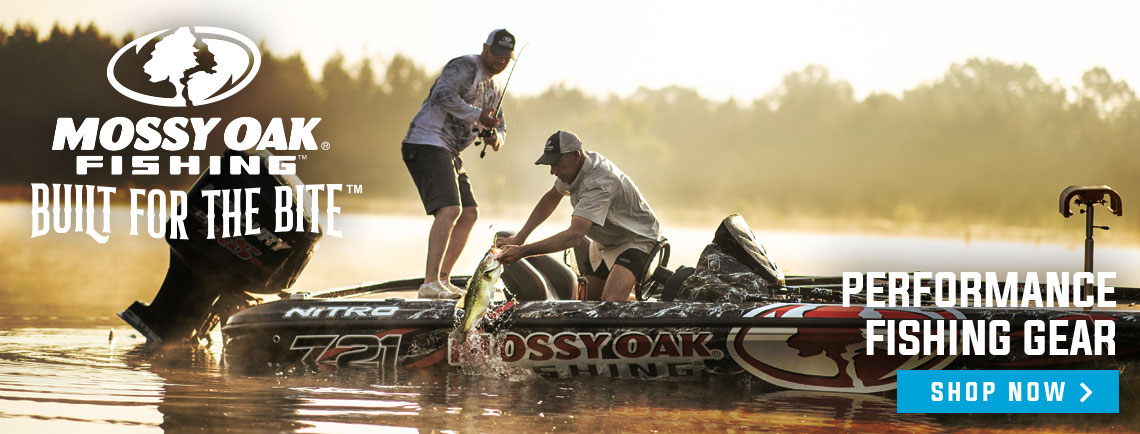Phillip Gentry
One of the recurring principles you’ll see when targeting any species of fish is the importance of proper depth presentation. Ranking only behind fishing where the fish are, depth presentation is the key to success in catching nearly everything that swims. It is very possible to be fishing in the right location, but present your offering too far above or too far below the fish and still catch nothing.
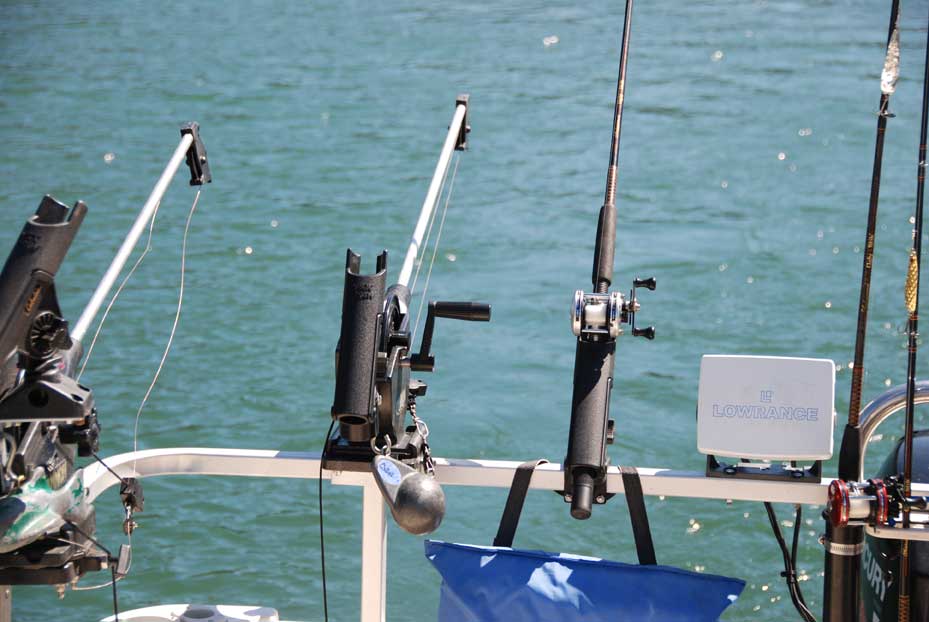
During the heat of summer when surface temperatures are at their peak, or when fishing water so deep that reaching a desired depth requires mechanical assistance, the proper use of downriggers takes out 95% of the guesswork in how deep you are presenting your offering.
A downrigger is a winch-like piece of equipment that is fixed to the transom area of the boat. The major components include a motor (or hand crank if a manual type is used), spool, boom, trolling weight, downrigger cable, line release, swivel base, depth counter, and rod holder. The downrigger is mounted to the boat via a swivel base that allows the boom to hang out over the transom. The downrigger cable is attached to a spool that controls the amount of line let out by either an electric motor or hand crank. A trolling weight or ball is attached to the tag end of the cable. The weight keeps the cable as near vertical in the water as possible. Attached to the cable is a line release that secures the fishing line to the downrigger.
Once the downrigger is set, the lure end of the fishing line trolls behind and down current of the boat. Resistance to the line caused by a fish striking the bait releases the line from the downrigger and the fish is played directly to the rod and reel.
It is important that the boat continue moving while trolling with a downrigger and even when a fish is on the line and being fought. Stopping the boat for more than just a few seconds will cause any additional baits to sink to the bottom and snag or float up and possibly tangle with another bait.
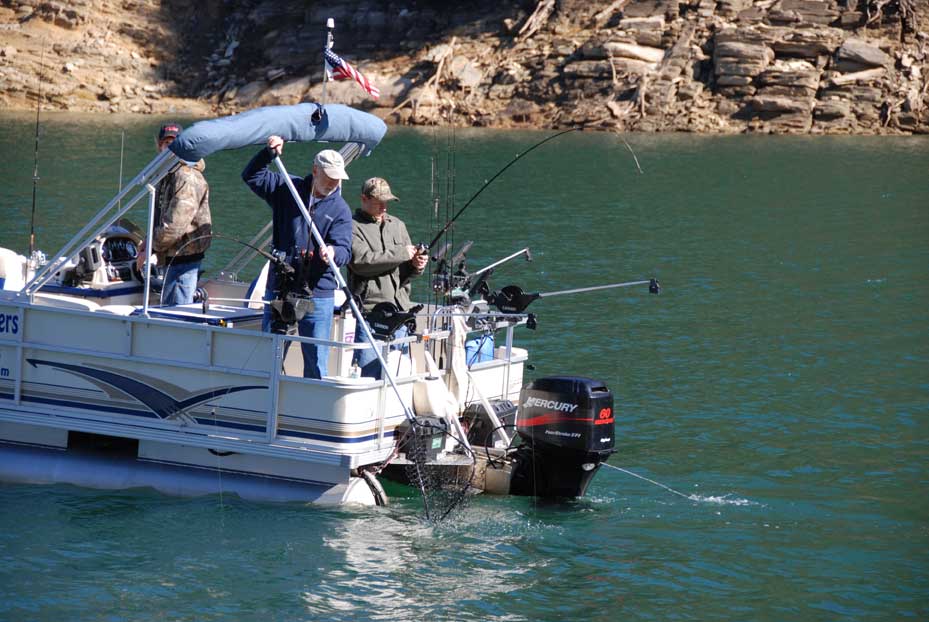
The aspect that gives most anglers difficulty in using downriggers is proper setting of the line in the release and the use of multiple lines on one downrigger. In order to secure more than one line to the downrigger cable an additional stacking release is used.
The lengths of the lines used on the same downrigger ball should be staggered to keep the baits from tangling. The bottom line should be longer than the upper line and the weight and action of the baits should be compatible. For example, let’s say an angler wants to troll two jighead/plastic combo from the same downrigger. It is preferable to use the same weight jigs for each line since the depth is determined by the downrigger.
DOWN RODDING FOR INLAND STRIPED BASS
If the angler wishes to troll a shallow-running crank bait and a bucktail jig, the jig would be secured to the bottom line and the crank bait to the upper line to keep the jig from falling into the crank bait. In this example also, the bottom line may be let out 130 feet before being clipped to the release. The top line would be let out to 100 feet before attachment. In this manner, the longer and deeper line is on the bottom and the shorter, shallower line is on top.
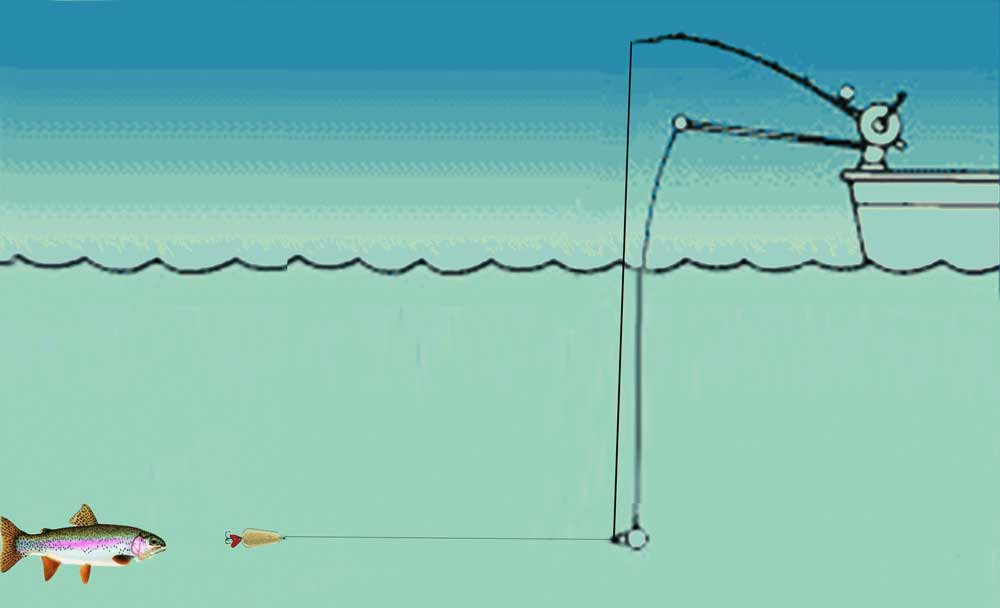
Downrigger lines should be set so that there is a pronounced bend in the rod once the rig is set. This bend helps take up slack that accumulates in the line when the line is released from the clip. The line should be doubled up when setting it in the clip so that the line can be released either by the fish striking the bait or by the angler by pulling the line from up.
Without using line counter reels, one of the easiest ways to determine distance when setting downrigger lines is to use the worm gear on a baitcast reel as a counter. The distance across the spool of a full baitcast reel is approximately 10 feet. Therefore, 13 times across the spool in either direction will give you the approximate length of 130 feet.
So long as the same method for determining distance is used for the upper and lower line, proper spacing of the baits will be established. While trolling, underwater obstructions such as standing timber, humps, or ridges will show up on the depth recorder. When such an obstruction is marked, increasing the boat speed will cause the ball to swing back away from the transom, reducing the depth of the ball. This in turn will also pull the baits up and decrease the chance of getting fouled.
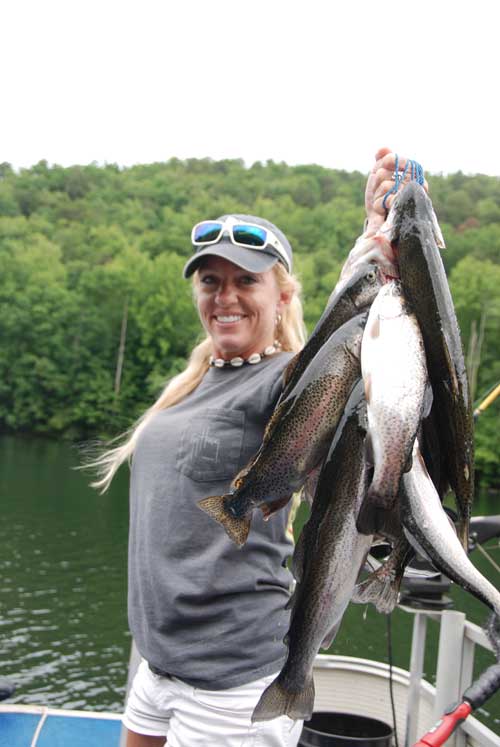
If there’s a need to stop or slow the forward progress of the boat, reel the ball up a few feet to increase the clearance between the baits and the bottom.
Upon occasion, the ball may hang an obstruction. It is for this reason that it’s important to be able to release the baits from topside to clear the ball without also losing the bait and a considerable amount of time. Downrigger setups have a braking system similar to the drag on a fishing reel that will pull more cable from the spool rather than risk damaging the downrigger or losing the ball.

